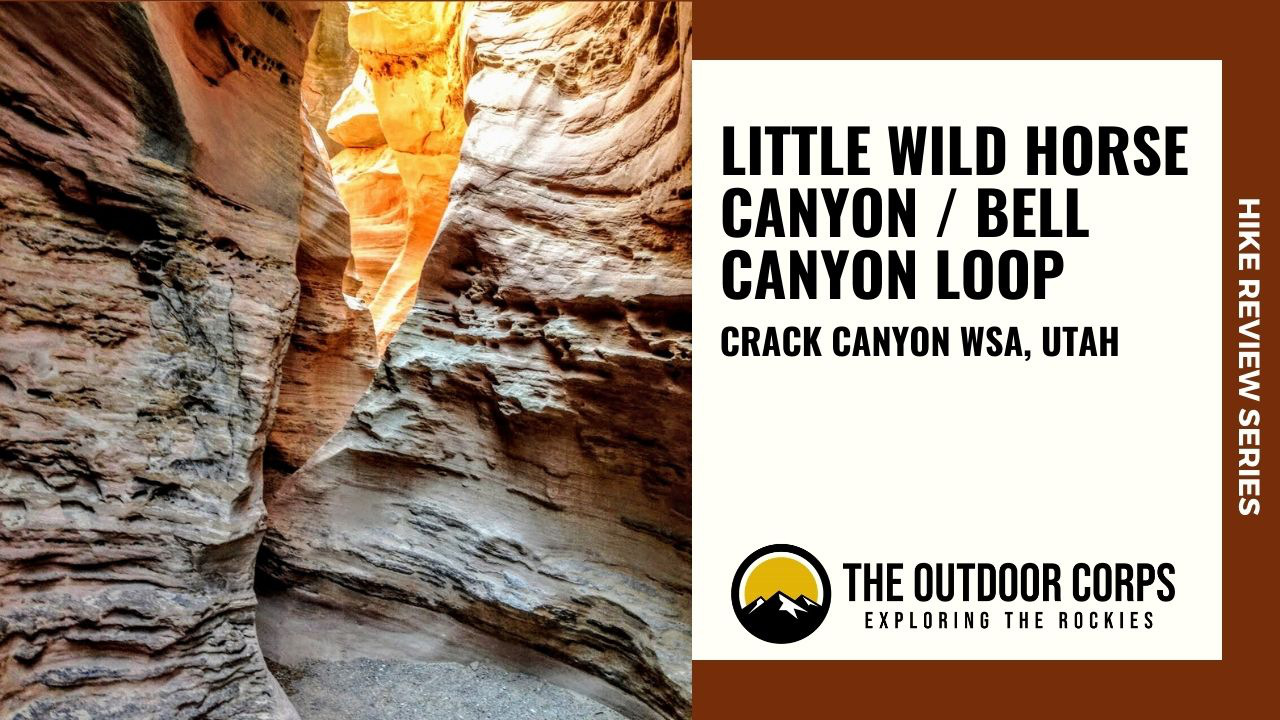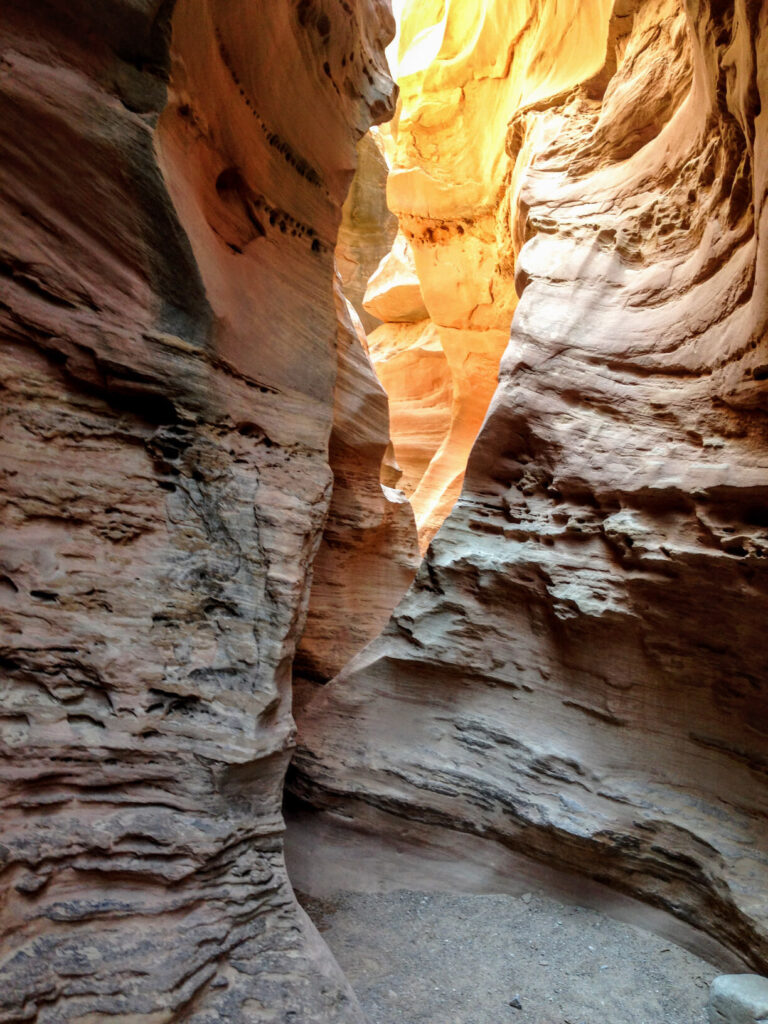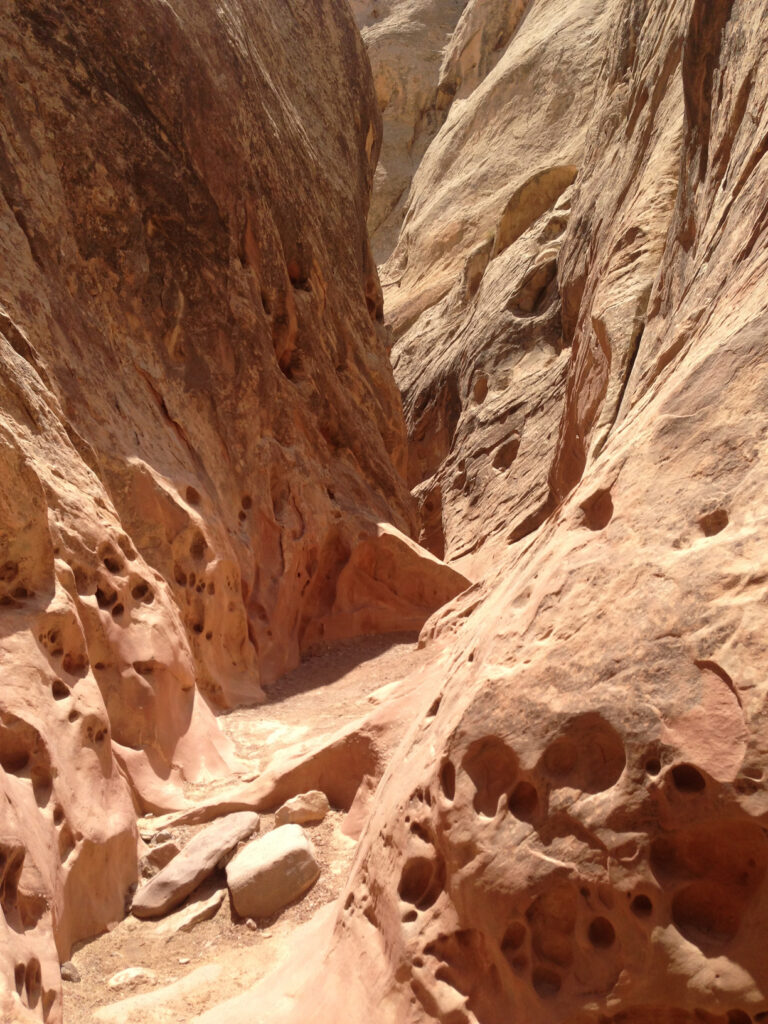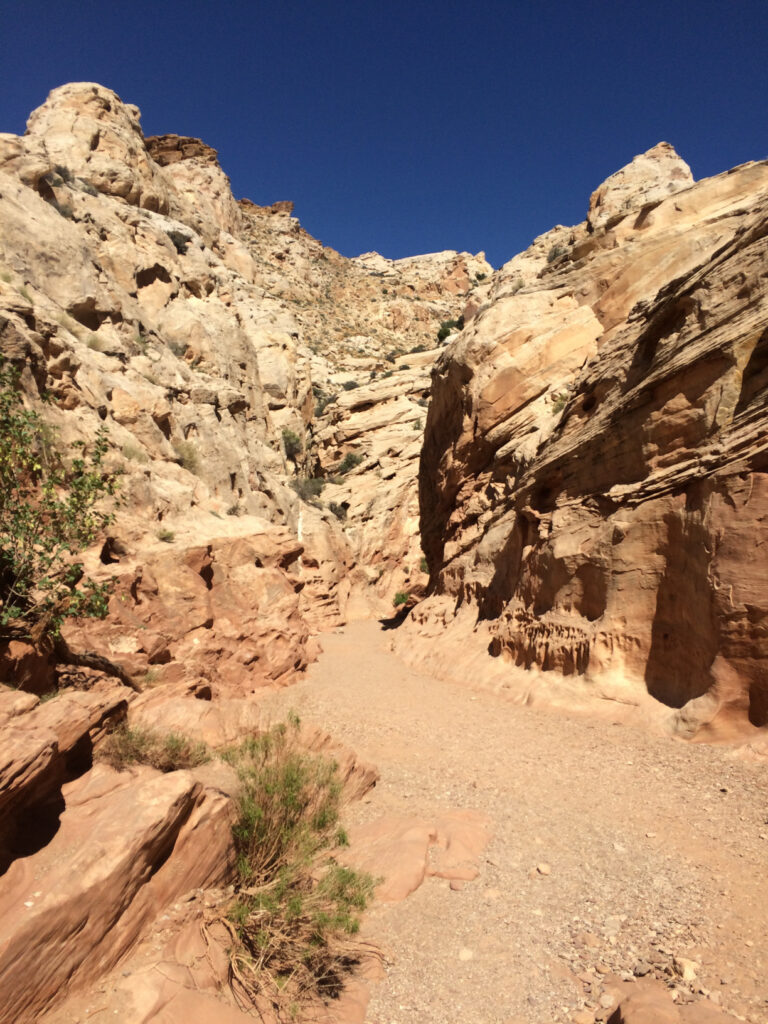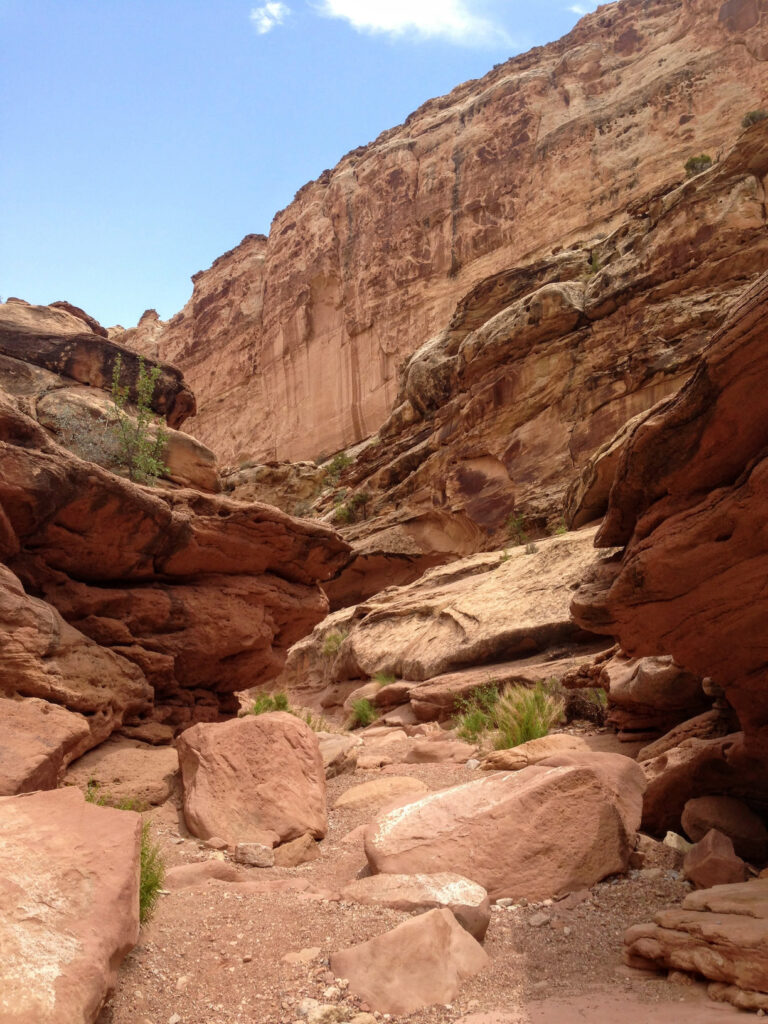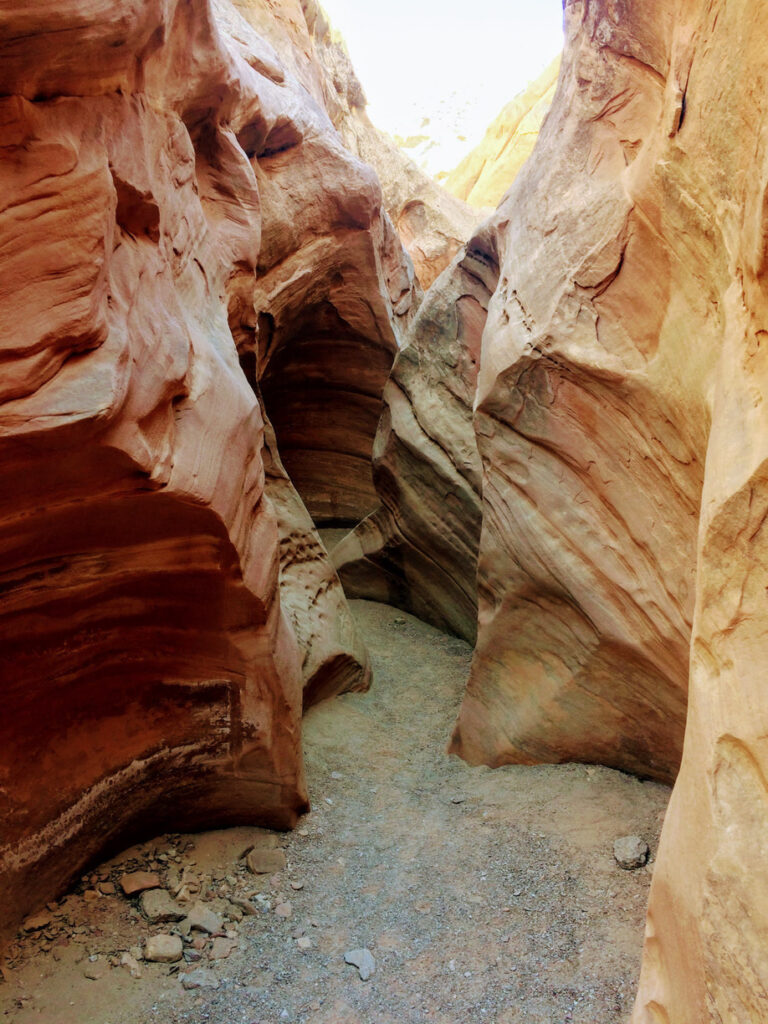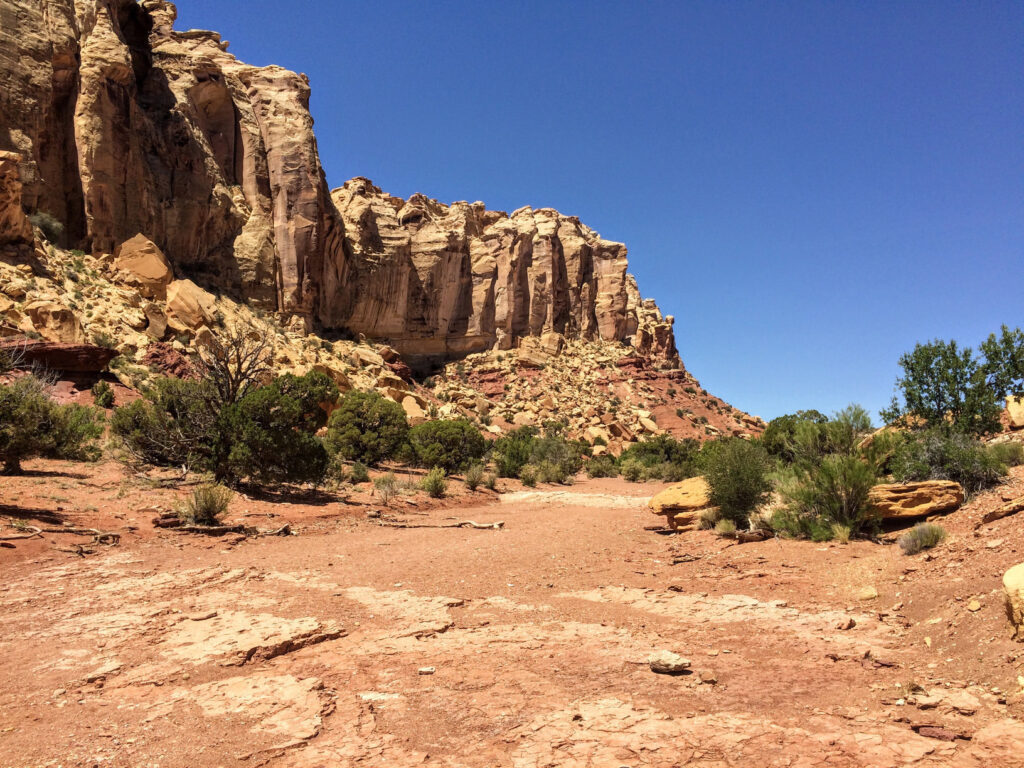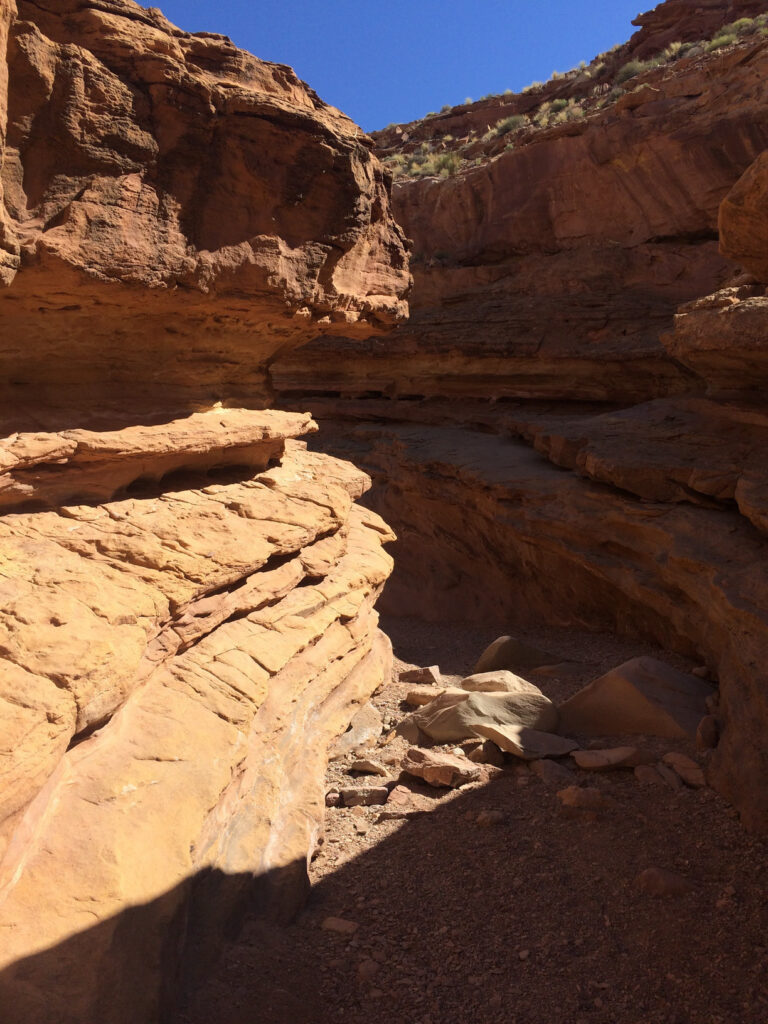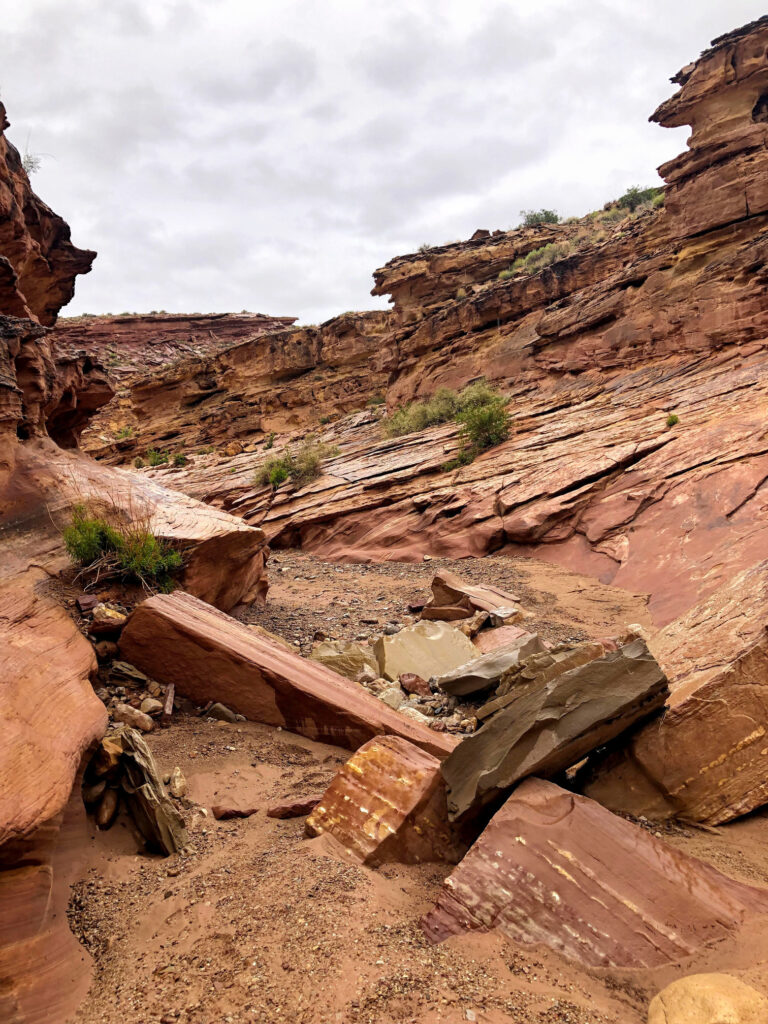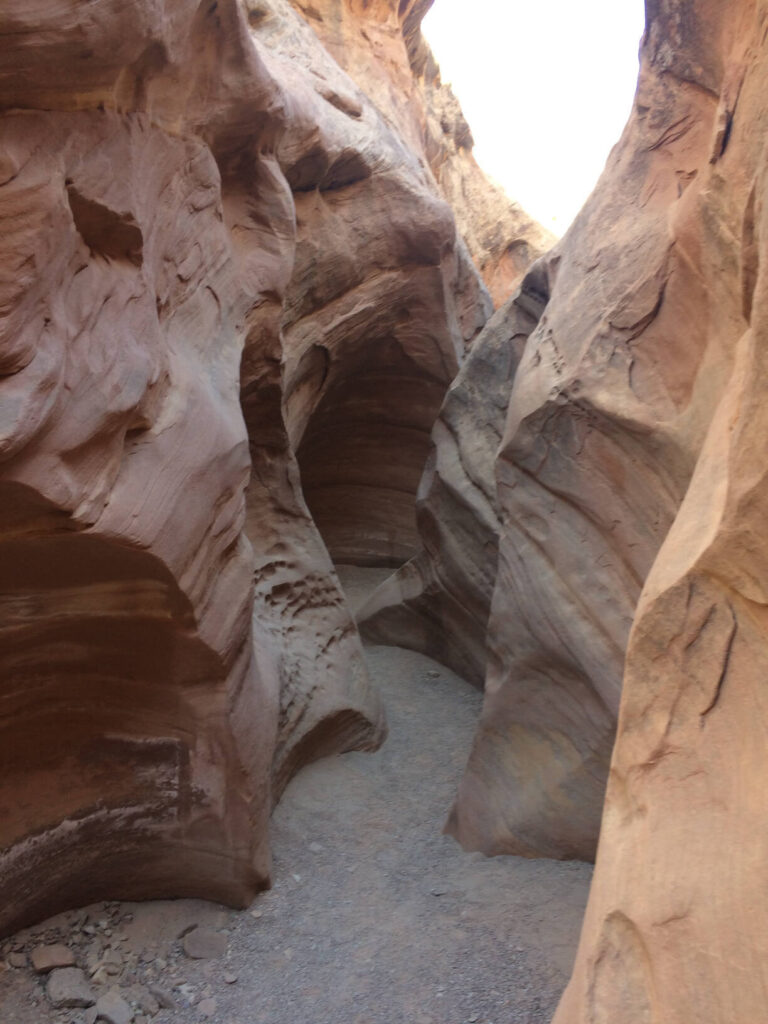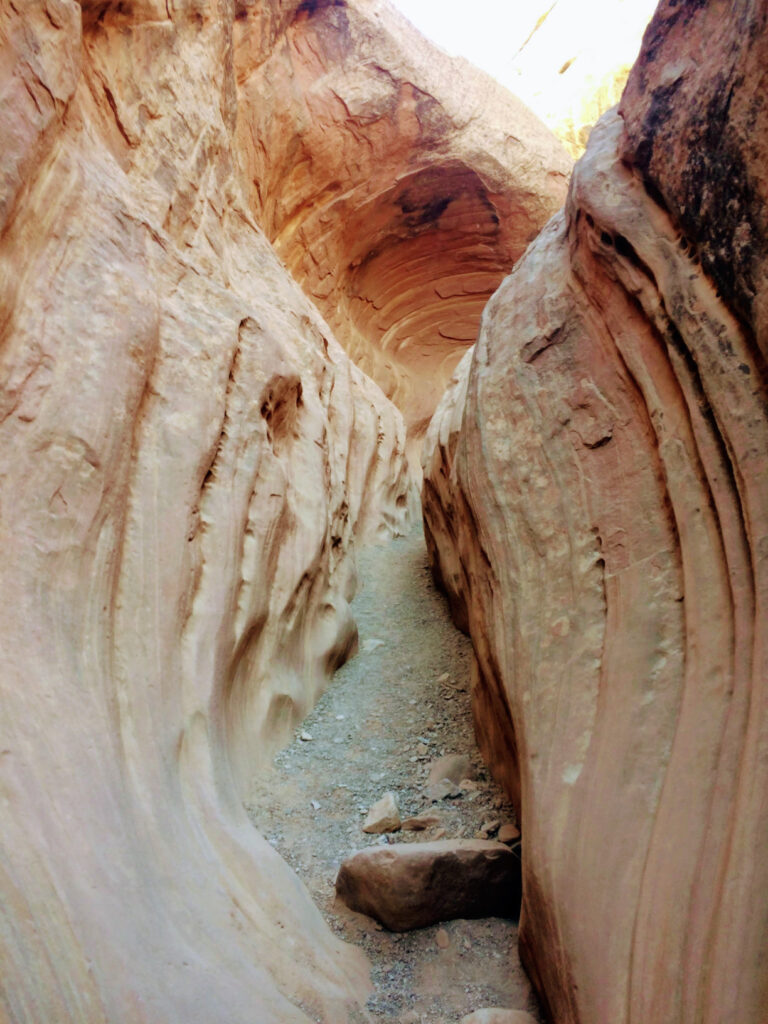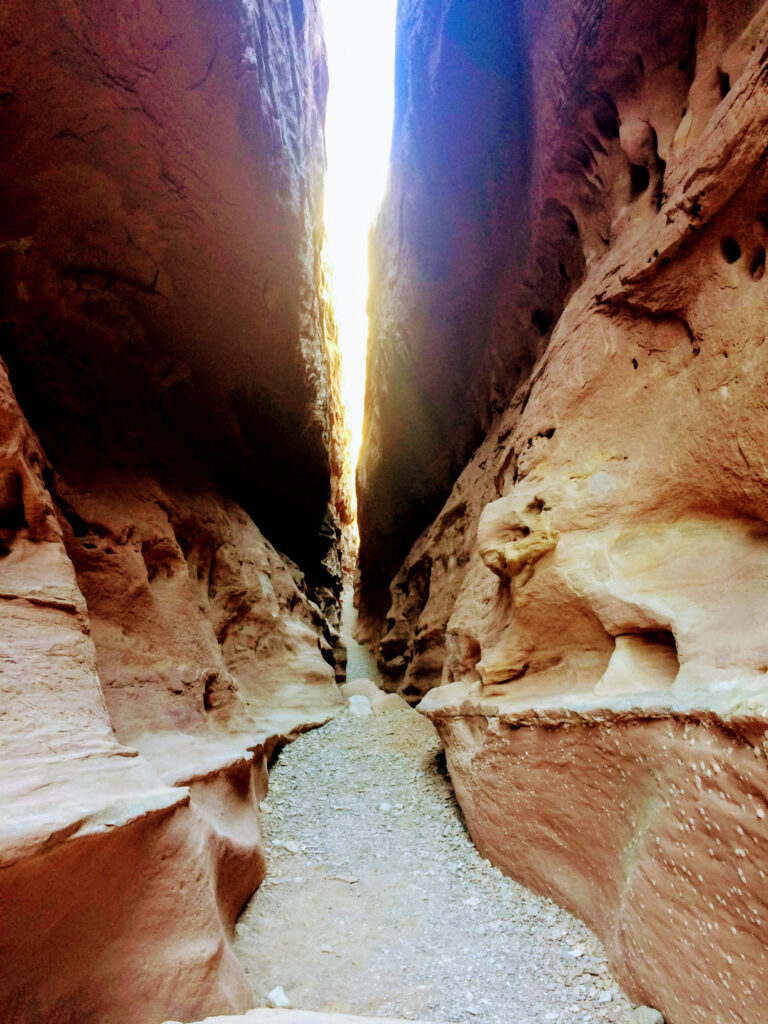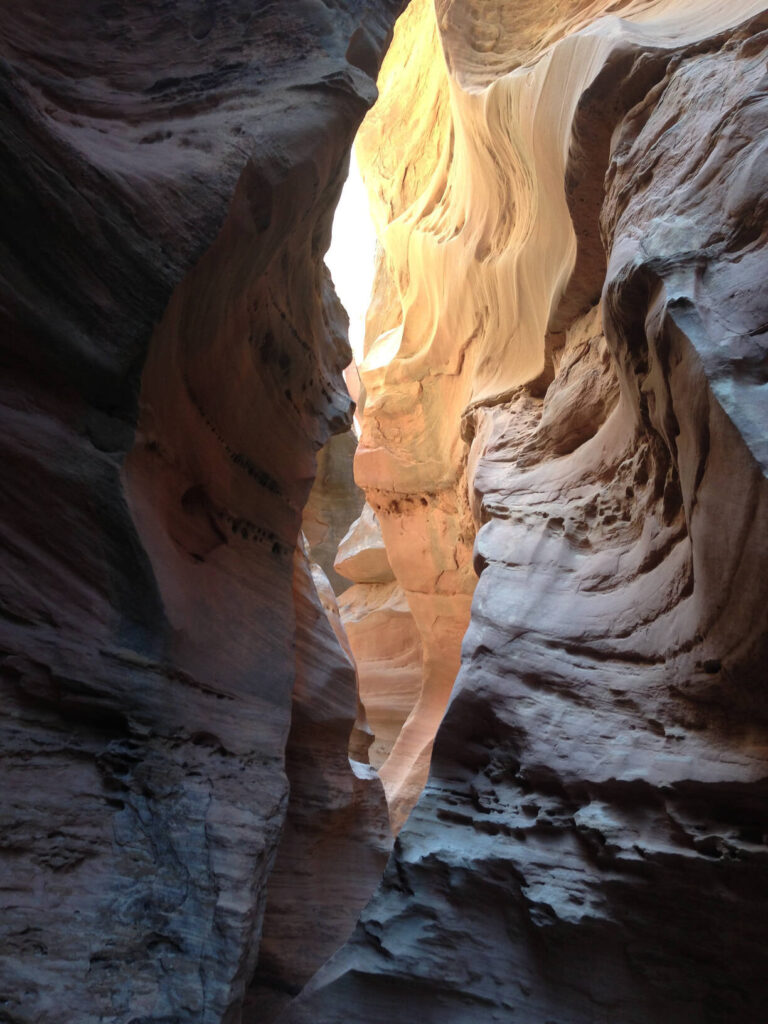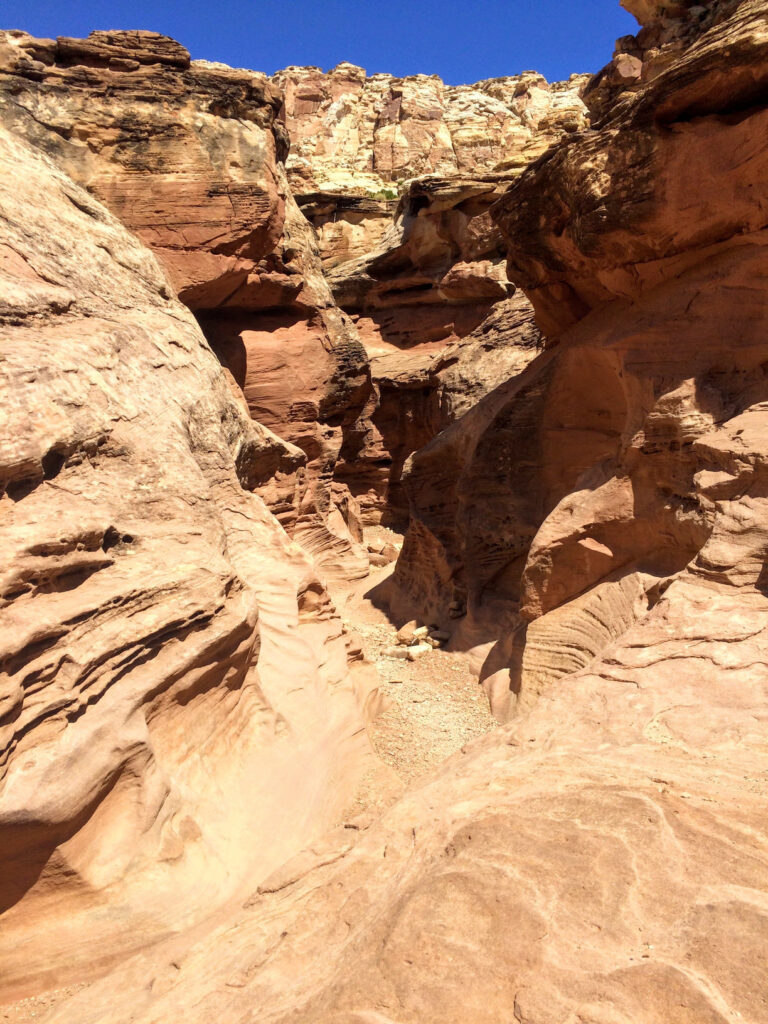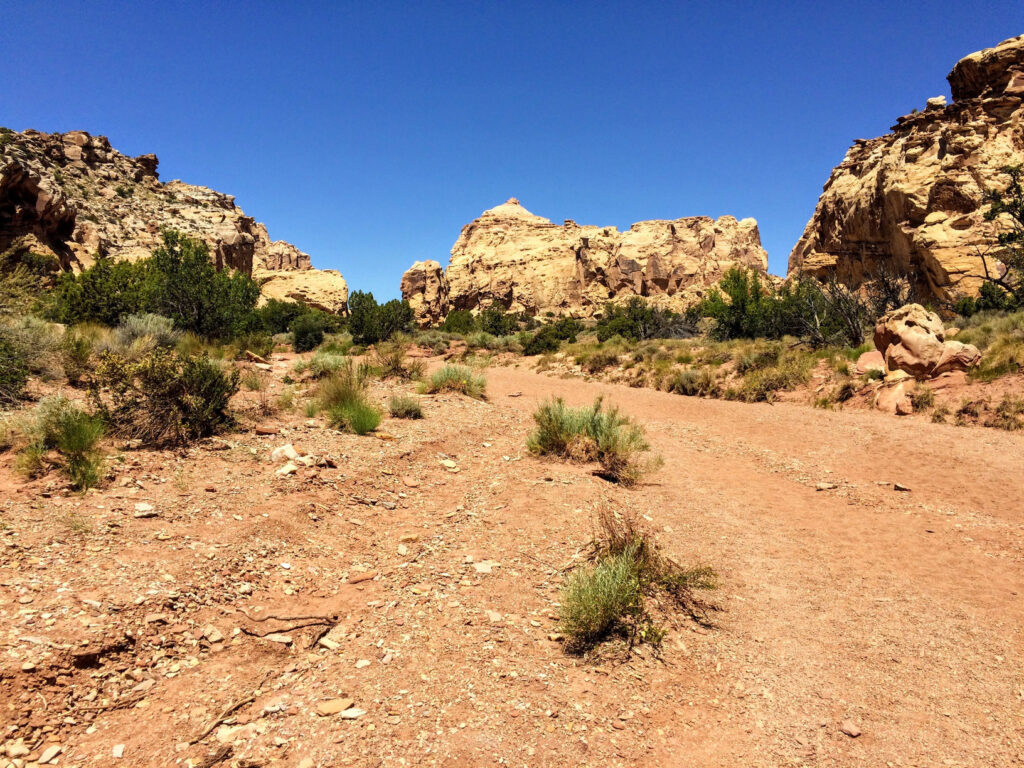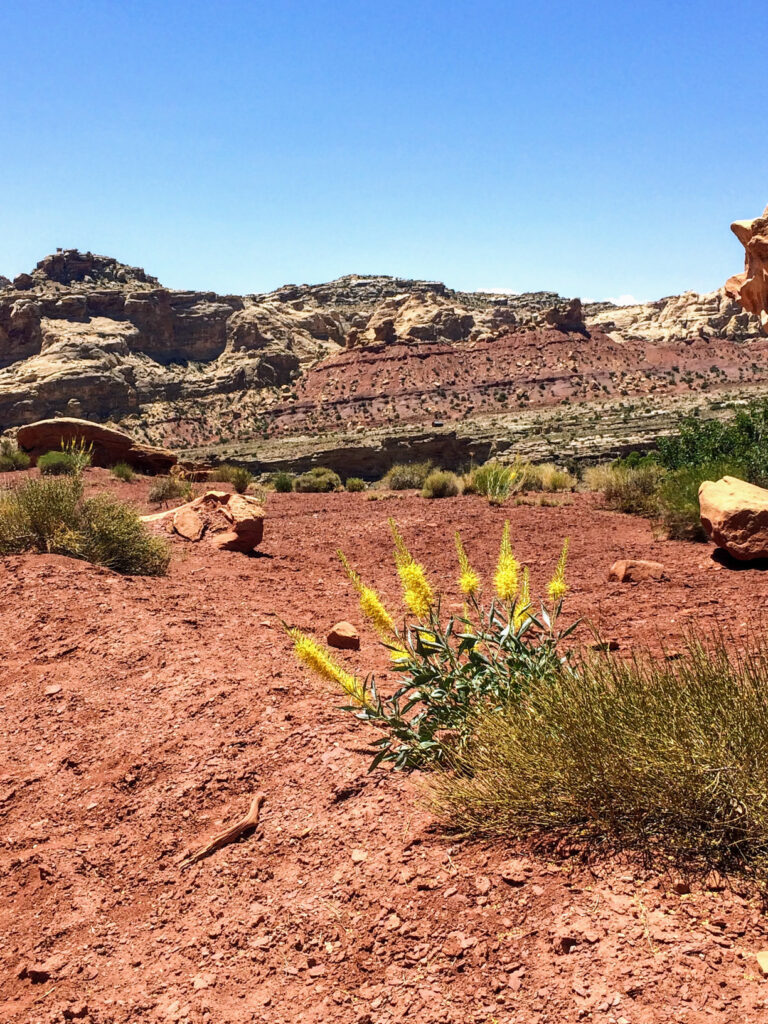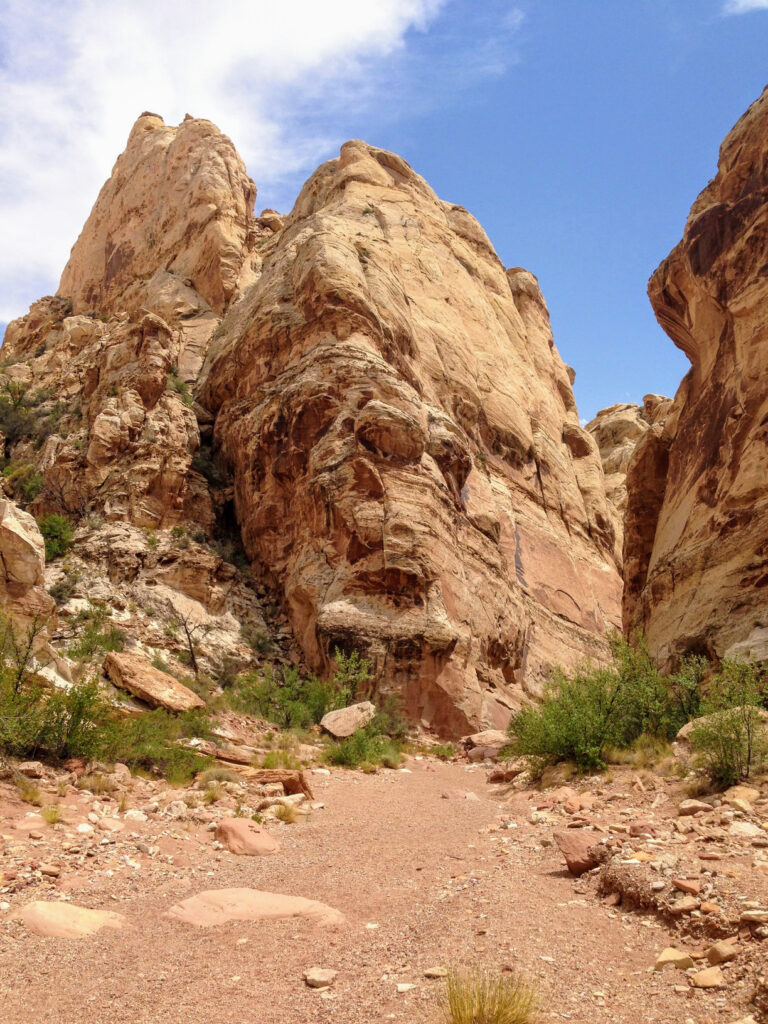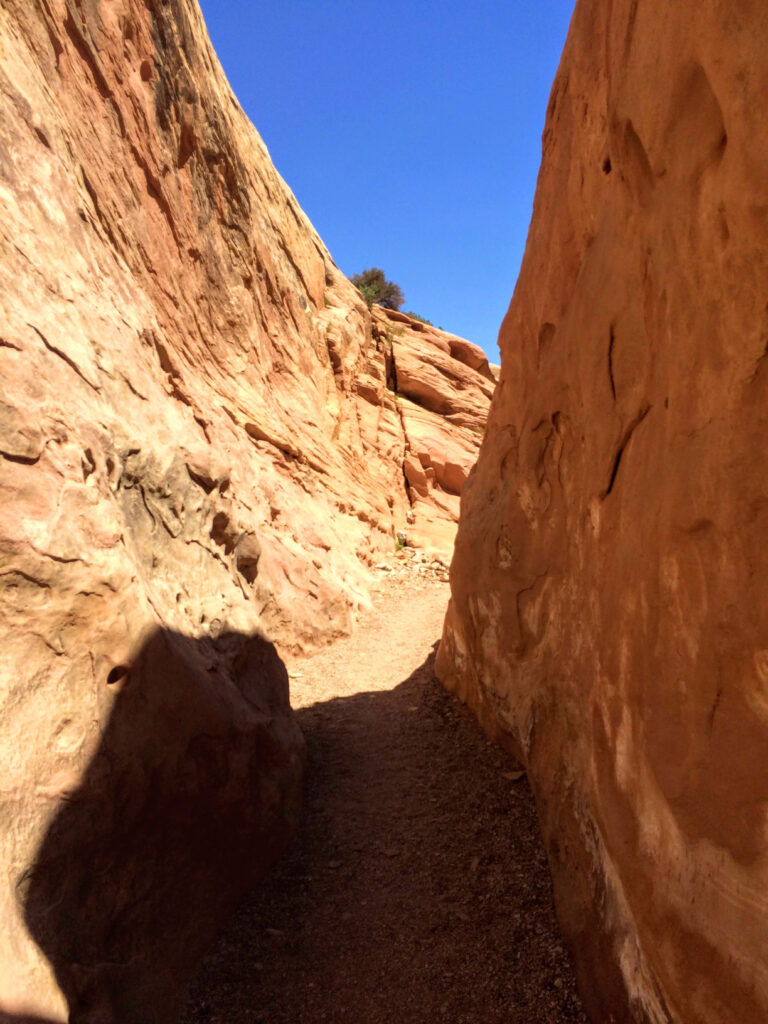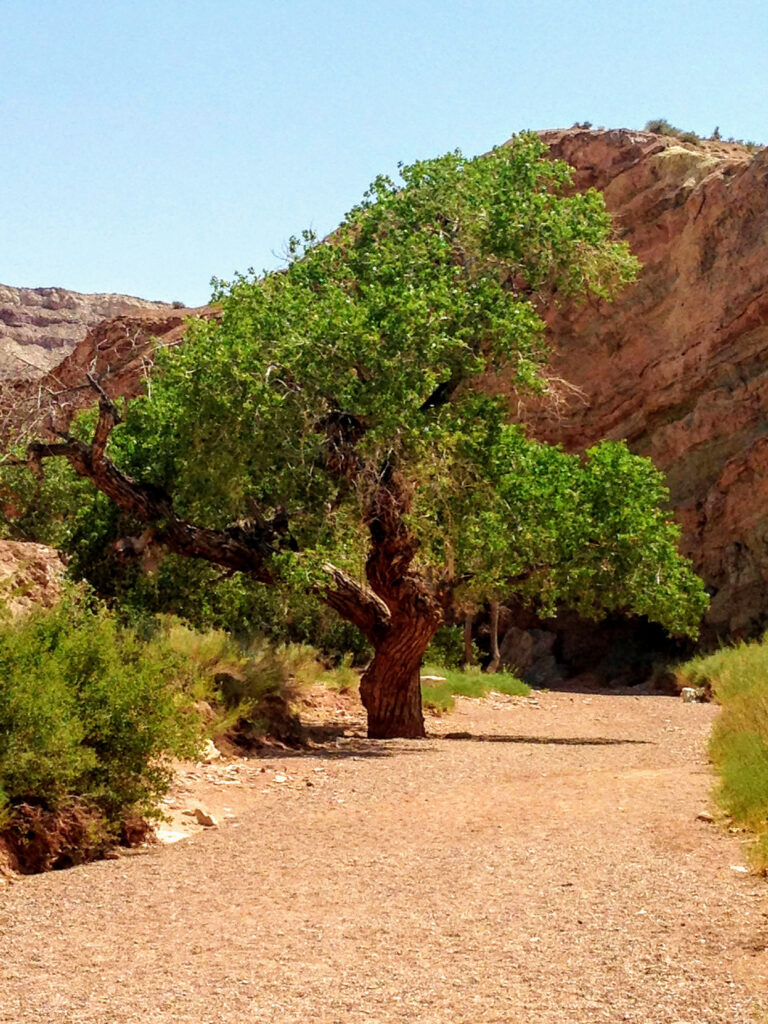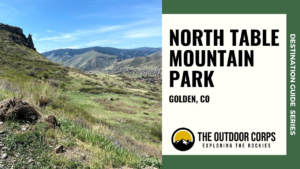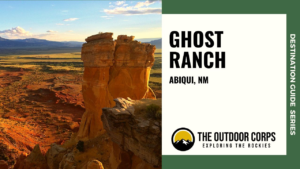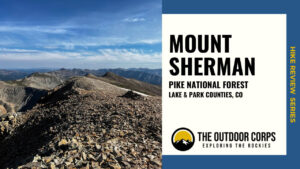The Little Wild Horse Canyon and Bell Canyon loop within Utah’s Crack Canyon Wilderness Study Area, near Goblin Valley State Park, is one of our all-time favorite slot canyon hikes. At 8.0 miles round-trip, this loop hike rewards visitors with amazing canyon scenery. In addition, the hike’s non-technical accessibility enables hikers of most skill-levels to enjoy the incredible splendor of these slot canyons.
Of the two canyons, Little Wild Horse Canyon is by far the more interesting given long stretches of extremely narrow slots. Thus, some visitors choose to hike Little Wild Horse Canyon out-and-back, rather than extending the hike. But we think including Bell Canyon and making the hike into a loop provides a fuller perspective and experience of the San Rafael Swell. Our hike review covers the entirety of the loop in a counter-clockwise direction, heading though Little Wild Horse Canyon first. You’re sure to have company on this hike, as this area is very popular, but these canyons are absolute gems that shouldn’t be missed!
HIKE REVIEW SERIES: LITTLE WILD HORSE CANYON / BELL CANYON
Trail Guide
Route Information
- Round Trip Distance: 8.0 miles
- Elevation Gain: 700 ft.
- Trail Type: Loop
- Trailhead: Little Wild Horse & Bell Canyon
- Coordinates: 38.58299444, -110.8029
- Dogs Permitted?: Yes; not recommended
Route Instructions
- Step 1 - Begin at the Little Wild Horse Canyon and Bell Canyon Trailhead. Follow the wash to start the hike and, in just a short distance, you'll reach a narrow area with a pothole. As with many parts of these slots, water may be present and, in this case, may be fairly deep.
- Step 2 - Exit the pothole area and continue to follow the wash. At about .5 miles into the hike, reach the intersection of Bell Canyon and Little Wild Horse Canyon. A right here, which can be missed if not paying close attention, will take you in a counterclockwise direction through Little Wild Horse Canyon.
- Step 3 - Shortly after entering Little Wild Horse Canyon, you'll start into the first slot section. Notice how years and years of flood water have eroded these canyon walls into incredible serpentine-like formations. It will be about three miles until you reach the next trail intersection, so enjoy!
- Step 4 - This first slot section is just a glimpse of what you'll see in a short distance, within the longer slot section. Note that these slots are very narrow, mostly requiring single file travel. You may encounter hikers heading in the opposite direction and will need to alternate parties in certain areas.
- Step 5 - The next section of slots you'll encounter are even more exquisite. Tall canyon walls and narrow passages make squeezing through here incredibly fun.
- Step 6 - As you continue through this second slot section, the canyon walls curvatures become even more beautiful. The section featured in the accompanying photo provides a fantastic opportunity for photographing the light shining into the slot canyon.
- Step 7 - After heading out the narrow passage, you'll be treated to a more expansive area with beautiful high canyon walls towering above.
- Step 8 - Encounter a final narrow section of Little Wild Horse Canyon before you head out of the slots and into more expansive canyon.
- Step 9 - After the narrow section, you'll hike through the wider canyon until you reach the junction of the northern trailhead for Little Wild Horse Canyon. This is Behind the Reef Trail, which is also a 4x4 road. Bear left at this intersection onto Behind the Reef Trail. This intersection is about 3.6 miles into the hike.
- Step 10 - Continue along Behind the Reef Trail. This area offers vast views of the San Rafael Swell. As you head closer to Bell Canyon, if you look closely to the west you'll see a tiny cabin out in the distance.
- Step 11 - In about two miles, you'll reach the entrance to Bell Canyon on your lefthand side. Hike through the canyon and enjoy more towering canyon walls, light scrambling, and some narrow sections.
- Step 12 - Bell Canyon has less narrow and spectacular slots, which are features that make Little Wild Horse Canyon so iconic. But, Bell Canyon has some of its own narrows and other interesting geologic features to make this a worthy addition to the hike.
- Step 13 - Complete the remainder of Bell Canyon and once again reach the intersection with the southern portion the Little Wild Horse Canyon Trail. Pass the Little Wild Horse Canyon Trail on your left.
- Step 14 - You'll now backtrack through the first portion of your hike, heading about .5 miles back towards the parking area. Head through the pothole section and through the wash to the trailhead to complete your amazing adventure.
PLANNING TIPS
Regulations
- Entrance Fees: None.
- Pets: Dogs are permitted on the trail, but not recommended. Heat exhaustion is a serious risk and rugged terrain makes this a fairly difficult hike with an animal.
- Camping: Goblin Valley State Park has established campgrounds for a fee; free dispersed camping on BLM land nearby.
Getting There
- Little Wild Horse Canyon and Bell Canyon are located in the Crack Canyon Wilderness Study Area, not far from Goblin Valley State Park. From Moab, the drive to the trailhead is about two hours.
- Starting on I-70 W, take exit 149 for Highway UT-24 W toward Hanksville. Follow UT-24 W for about 25 miles until you reach Temple Mount Rd. Turn right onto Temple Mount Rd. for about five miles, and reach Goblin Valley Rd. Turn left onto Goblin Valley Rd. for about six miles and then turn right onto Wild Horse Rd. for another five miles until reaching the Little Wild Horse Canyon and Bell Canyon Trailhead parking area on the right.
Parking
- Park at the Little Wild Horse Canyon and Bell Canyon Trailhead parking area. There are about 15 parking spots at the trailhead, which fill up extremely quickly. Overflow parking along Wild Horse Road is common, but can also be crowded. A restroom is located at the parking area.
Weather Forecast
- It can get very hot in the Utah desert (particularly during the summer), so it’s best to hike early in the morning during cooler temperatures. In addition, slot canyons are very prone to flash flooding. Please check the weather before heading into the canyons. If there is a forecast for rain in the area, consider choosing an alternative day to hike here. Also, be sure to bring plenty of water to maintain hydration.
RECOMMENDED HIKING APPAREL AND GEAR
Ten Essentials
Even on a day hike, you should carry the appropriate type and amount of gear, clothing, food, water, and other essentials. For certain, make sure that your packing list includes the Ten Essentials.
Hiking Boots
The Merrell Moab hiking boot lineup offers a good balance between weight and foot protection. These are great for scrambles and are constructed with waterproof membranes so you don’t have to worry about damp feet if the weather turns or you have to splash through streams or puddles along the way.
Hiking Pants
We love prAna’s hiking pants for their quality and versatility. Indeed, their Zion (for men) and Halle (for women) are great on- and off-trail, especially for travel. Constructed with a durable UPF-50 fabric, a water-repellant finish, and utility pockets, these have become a staple in our wardrobe. If you intend to hike, consider hiking pants rather than shorts (both for warmth and sun protection).
Base Layer Shirt
Patagonia’s lineup of capilene base layer t-shirts are lightweight and moisture wicking. For our hiking t-shirts and base layers, we often turn to Patagonia products for their craftsmanship, durability, and comfort. Patagonia Capilene Cool Lightweight shirts are versatile and great for hiking and/or trail running.
Hiking Fleece
Depending upon the time of year (and time of day), a fleece hoody or jacket may come in handy. We like the Patagonia R1 as a midweight, but light, option for chilly morning starts. Available as a hoody or jacket, the Patagonia R1 is quick drying, breathable, and extremely comfortable.
Hiking Socks
For most of our hiking needs, we like Darn Tough socks over the multitude of options on the market. They last long and have an ironclad guarantee. In addition, Darn Tough has a variety of designs, ankle lengths, and cushioning options to choose from. We like the Hiker quarter length with light cushioning.
Headwear/Face Covering
We often wear a Buff as a neck gaiter to protect from the sun, given its UPF 50 protective construction. Buffs are also a great option to use as a face covering on the trail. In fact, there are 12+ ways of wearing a Buff, so it’s a versatile piece of gear.
Day Pack
If you’re out for a day hike or quick trail run, consider a super lightweight hydration vest. Nathan's Hydration Vests are minimalist packs with reasonable storage capacity and hydration reservoir compatibility.
Sunscreen
Sun Bum is our go-to sunscreen nowadays. We like its non-greasy feel and neutral fragrance. Any quality sunscreen will do, but Sun Bum SPF 30 is our choice for long days in the sun.
Trail Snacks
Taos Bakes, made in New Mexico, are some of the best tasting energy bars out there. Vegan and gluten-free, these bars pack in a nice dose of fiber and protein along with a touch of sweetness. Available in multiple varieties, such as Toasted Coconut/Vanilla Bean, Piñon Coffee/Dark Chocolate, and Pecan Praline/Maple Syrup.
Recommended books
If you plan to visit more of the San Rafael Swell area, which we highly recommend, consider picking up “Non-Technical Canyon Hiking Guide to the Colorado Plateau” for more non-technical slot canyon hike ideas. In addition, we recommend picking up a few naturalist guides related to the area’s geologic history for general awareness of how the San Rafael Swell came to be. Below are a few of our recommended readings. Happy hiking!
- Non-Technical Canyon Hiking Guide to the Colorado Plateau
- Hiking Guide to San Rafael Swell Slot Canyons in Utah 2
- Hidden Treasures of Utah’s San Rafael Swell
- Utah’s Incredible Backcountry Trails
- Woody Plants of Utah: A Field Guide
- Roadside Geology of Utah
- San Rafael Swell
- Trails Illustrated – San Rafael Swell
Disclosure: Please note that this post contains affiliate links. We may receive a small commission if you buy a product or service through an affiliate link. This revenue helps us provide readers with helpful content to plan amazing adventures.

